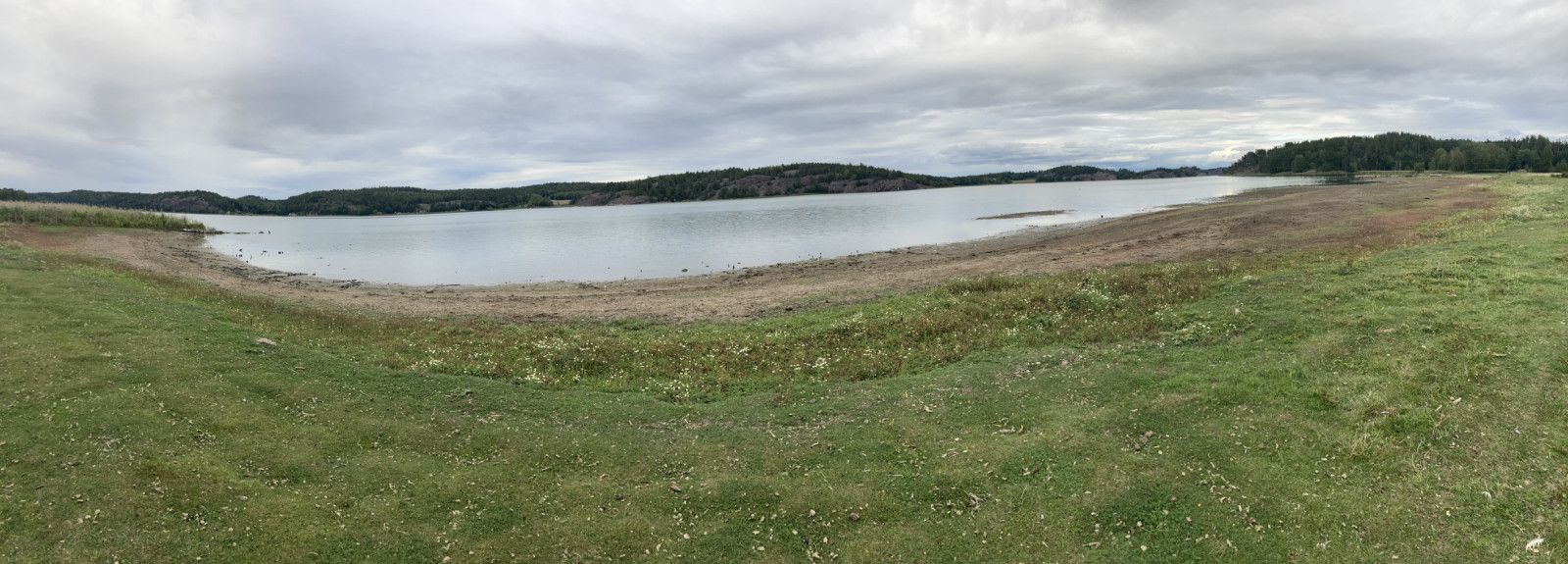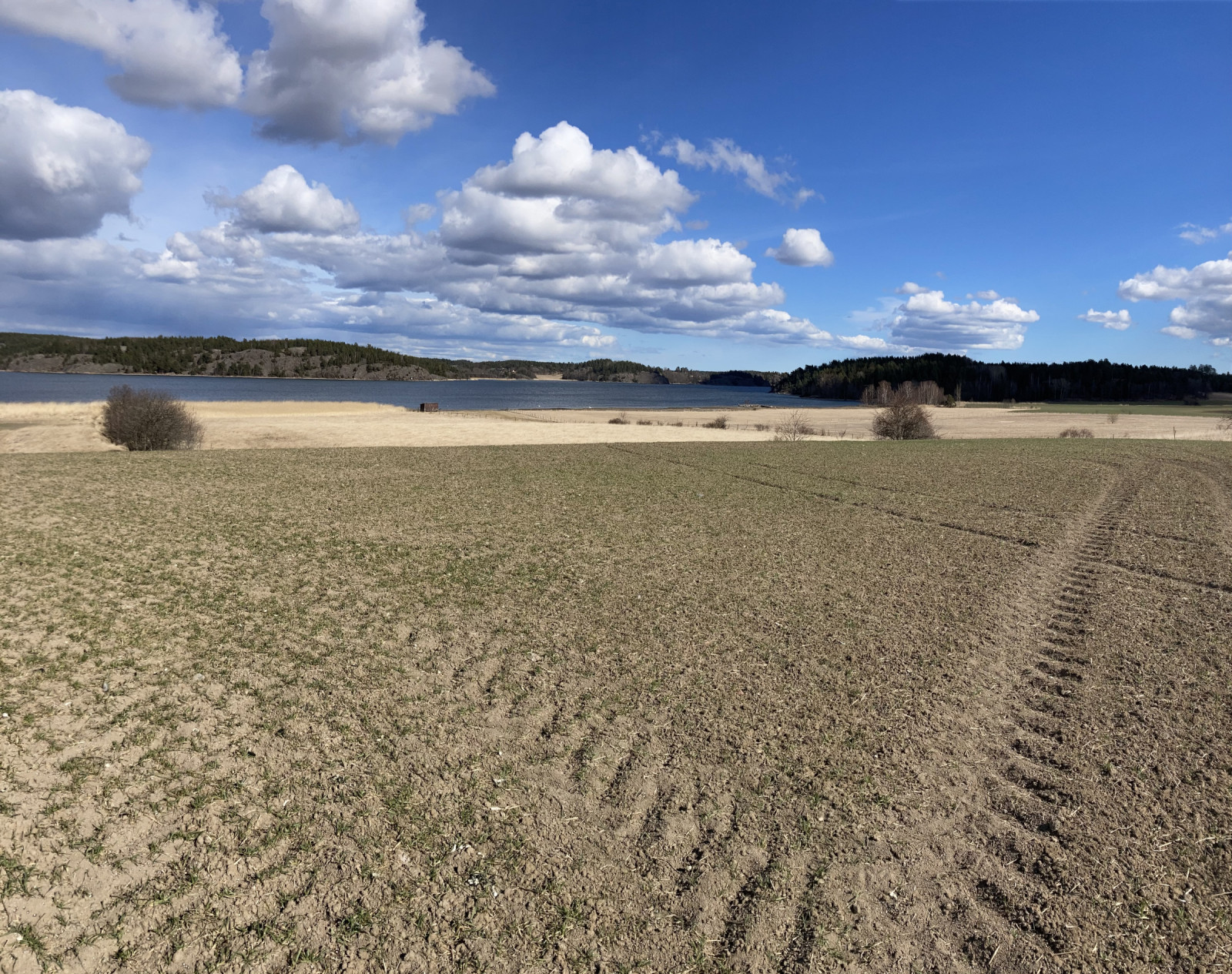Beschreibung
The birds start to arrive at Killingholmen in February when the ice starts to loose its grip on the coastal waters. Then ducks start to rest in the shallow parts of the bay; Reiherente (at most 100) and around 1000 Gänsesäger can be found. Also the rarer winter ducks like Krickente, Tafelente, Zwergsäger, Bergente and Mittelsäger. A few hundred geese and around 100 Singschwan feed on the areas fields and coastal meadows around march. In March the other early spring birds also arrive; Feldlerche, Ringeltaube, Star and Kiebitz. In spring you can find Bartmeise in the reed beds.
Year round Sperber, Seeadler and Mäusebussard are the common predatory birds. But Steinadler, Kornweihe and Rotmilan pass by the area. Most common passerine birds arrive in March/April. Slätbaken is a stopping point for passerine birds, which makes it common to find uncommonly early Heidelerche and Misteldrossel.
From late February and in March the owls in the area can be heard calling. Waldkauz Sperlingskauz and Uhu are sometimes heard. In March more geese start to arrive and not only the common Kanadagans and Graugans. Also Bläßgans (at most 67) and Weißwangengans (at most 100). Saatgans, Tundrasaatgans and Kurzschnabelgans are sometimes found. Also Zwergschwan has been observed.
On the coastal meadows large amounts of passerine bird start to rest in the end of March and in April. Wiesenpieper, Bachstelze, Bluthänfling are the most common. Among these Strandpieper is regularly seen. In the large grassy areas Sumpfohreule can be found. On the coastal meadows Flußuferläufer, Waldwasserläufer, Rotschenkel, Pfeifente, Schnatterente, Löffelente, Bruchwasserläufer, Goldregenpfeifer, Bekassine and Haubentaucher. Most common dabbling ducks are found but only Krickente is numerous (at most 70). At the Torpa damm Knäkente and Spießente have been seen, along with smaller amounts of other ducks.
In april large amounts of thrushes move past the fields and coastal meadows. Hundreds of Singdrossel, Rotdrossel, Wacholderdrossel and Misteldrossel are seen. In the end of May and April most birds disappear, except for the breeders.
In May the latest passerine birds, and night active birds arrive. On the fields Wiesenweihe, Wanderfalke and Wachtelkönig are found. Heringsmöwe sometimes rest on the coastal meadows in May. Karmingimpel often sings here. On the meadows Weißwangengans, Graugans, Kanadagans, Schnatterente, Rotschenkel, Kiebitz, Haubentaucher, Reiherente, Schellente and Bläßhuhn breed. In the area Kleinspecht, Neuntöter, Krickente and Singschwan breed. At Storåns river mouth you can observe Eisvogel.
During autumn Hov strandängar becomes better for birding. From July the area is a good site for wading birds such as Kiebitz, Großer Brachvogel, Sandregenpfeifer, Flußregenpfeifer, Flußuferläufer, Bekassine, Goldregenpfeifer, Grünschenkel, Rotschenkel, Kampfläufer, Bruchwasserläufer and Waldwasserläufer. These are all common, while Zwergstrandläufer, Alpenstrandläufer, Regenbrachvogel, Temminckstrandläufer and Sichelstrandläufer are more rare.
Other wetland birds are often found. Among the rarer birds Eisvogel, Raubseeschwalbe, Blaukehlchen and Silberreiher can be noted. Large amounts of gulls, geese and terns can be found, especially Graugans which some years have been found as numerous as 3000.
Large amounts of passerine birds are found in the meadow areas. The most numerous passerine birds are Stieglitz (250 at most), Rauchschwalbe (500 at most), Braunkehlchen, Steinschmätzer, Star (600 at most). Later in autumn Zwergtaucher, Zwergschnepfe, Berghänfling, Ohrentaucher, Zwergsäger and Bergente are sometimes found.
Details
Zugang
Inre Slätbaken is located east of the town of Söderköping. Parking can be found around Hov and several other places. Click on a P in the map for directions to a parking spot.





